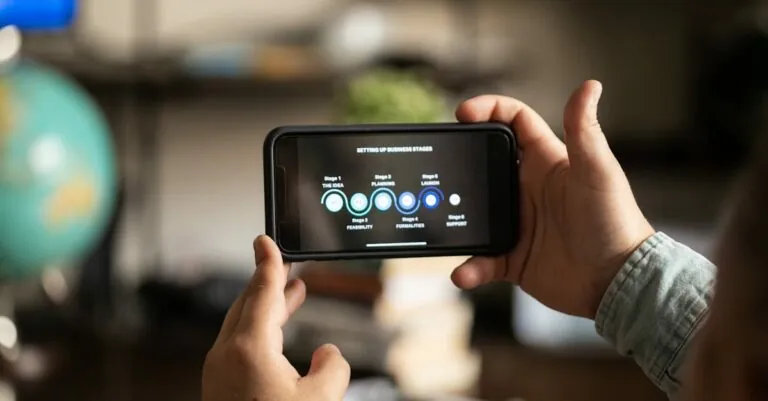In a world where everyone’s glued to their smartphones, mobile apps have become the secret sauce for success. They’re not just tools; they’re the magic wands that turn mundane tasks into delightful experiences. Whether it’s ordering pizza or tracking fitness goals, apps are here to make life easier and a bit more fun.
Table of Contents
ToggleOverview of Mobile Apps
Mobile apps play a crucial role in enhancing user experiences across various platforms. They provide seamless access to services and information, which increases efficiency in daily tasks. Many businesses utilize apps to improve customer engagement through personalized interactions.
Applications serve various purposes, including communication, entertainment, and productivity. Social networking apps connect individuals instantly, making it easier to share moments. Gaming apps offer interactive experiences, allowing users to immerse themselves in different worlds.
Fitness apps enable users to track their workouts and monitor health goals accurately. Shopping apps simplify the purchasing process, giving users the ability to compare products effortlessly.
Recent statistics show that over 2.87 million apps are available on the Google Play Store. The Apple App Store features more than 1.82 million applications. This vast array reflects the diversity of options available to end-users.
Furthermore, mobile apps significantly impact the economy, contributing billions to global revenue. Analysts project that mobile app revenue could reach $407.31 billion by 2026. Opportunities for developers abound, as businesses continue to seek innovative app solutions to engage users.
Flexible design and functionality characterize successful mobile apps. User-friendly interfaces lead to higher retention rates, making it essential for developers to prioritize user experience. Investing in constant updates ensures that apps remain relevant to changing consumer needs.
Mobile apps are integral to modern life, delivering value across multiple sectors and influencing daily habits. Their development shapes how society interacts with technology, establishing them as indispensable tools.
Types of Mobile Apps
Mobile apps come in various types, each designed to fulfill specific user needs and preferences. Understanding these types helps users find the best solution for their activities.
Native Apps
Native apps operate directly on a device and utilize its features. Developers create these apps for specific platforms, such as iOS or Android. Popular examples include Instagram and WhatsApp. High performance and sleek user experiences characterize native apps, as they leverage the device’s hardware capabilities. These apps require regular updates and maintenance, ensuring optimal functionality.
Web Apps
Web apps function through web browsers and require an internet connection to operate. They offer a responsive design that adapts to various screen sizes, making them accessible on multiple devices. A common example is Google Docs, which allows users to collaborate online. These apps are easier to develop and maintain compared to native apps. However, they may lack some features specific to device hardware, potentially limiting functionality.
Hybrid Apps
Hybrid apps combine elements of both native and web apps, providing flexible solutions. By integrating web technologies with native features, they offer a balance between performance and accessibility. Popular examples include Facebook and Uber. Developers create hybrid apps using a single codebase, simplifying the maintenance process. While they may not always perform as efficiently as native apps, hybrid apps can deliver a satisfactory user experience across different devices.
Key Features of Mobile Apps
Mobile apps encompass essential features that enhance user experience. Their design and performance play critical roles in their effectiveness and usability.
User Interface Design
User interface design significantly influences user engagement. Intuitive navigation makes it easy for users to interact with features. Clear visual hierarchies guide actions, while responsive elements keep users informed. Accessibility options enhance usability for individuals with disabilities. A focus on aesthetics often attracts more users, ensuring retention. Regular updates ensure designs stay current, responding to user feedback and preferences.
Performance and Speed
Performance and speed are crucial for mobile app success. Apps should load in under three seconds to maintain user interest. Reduced latency keeps interactions smooth, allowing users to complete tasks efficiently. Efficient coding and optimization contribute to lower resource consumption on devices. Regular performance testing identifies bottlenecks that may hinder user experience. Overall, high performance enhances satisfaction, driving continuous app usage and favorable reviews.
The Development Process of Mobile Apps
The development process for mobile apps involves several stages that ensure a successful product. Proper planning leads to effective strategies that guide the project.
Planning and Strategy
Effective planning and strategy set the foundation for mobile app development. During this phase, developers define target audiences, establish project goals, and determine essential features. Researching competitors and user needs enhances understanding of market trends. A well-structured roadmap outlines objectives and timelines, keeping the team aligned. Collaboration among designers and developers fosters creativity and innovation. Prioritizing user feedback helps refine initial concepts, ensuring the end product resonates with users. Allocating resources effectively allows teams to manage budgets and timelines, streamlining the development process.
Coding and Testing
Coding and testing are crucial steps in creating reliable mobile applications. Developers write clean, efficient code, focusing on performance and functionality. Choosing the right programming languages, such as Swift for iOS and Kotlin for Android, impacts efficiency. Integrating third-party libraries can expedite development without compromising quality. Testing begins early, ensuring issues get identified and resolved promptly. Automated tests help verify code integrity, while user testing offers insights into real-world usage. Maintaining a continuous testing cycle improves app stability and performance. This thorough approach minimizes bugs and enhances user experience, ultimately leading to a successful launch.
Trends in Mobile App Development
Mobile app development trends evolve rapidly, reflecting technological advancements and user demands. The integration of artificial intelligence and enhanced security features represents significant shifts.
Artificial Intelligence Integration
Artificial intelligence transforms mobile app functionalities across many sectors. Developers leverage AI for personalized user experiences, predicting preferences based on behavior patterns. Applications like virtual assistants and chatbots enhance customer support, providing instant responses to queries. Machine learning analyzes data inputs, optimizing app performance over time. AI algorithms also improve recommendations in entertainment and shopping apps, making user interactions more engaging. This integration drives innovation, enabling apps to adapt and learn from user behaviors continuously.
Enhanced Security Features
Enhanced security features are vital as user privacy concerns rise. Developers prioritize encryption to safeguard sensitive information, establishing trust with users. Multi-factor authentication adds an extra layer of protection, reducing unauthorized access risks. Biometric security, including fingerprint and facial recognition, streamlines user verification while ensuring safety. Regular security updates address vulnerabilities and comply with legal regulations. App security plays a crucial role in user retention, as consumers prefer platforms that prioritize data protection and privacy.
Mobile apps have become vital components of daily life transforming tasks and enhancing user experiences. Their ability to provide convenience and engagement makes them indispensable for both individuals and businesses. As the app landscape continues to evolve with advancements in AI and security measures, users can expect even more personalized and secure interactions.
The ongoing development process emphasizes the importance of effective planning and user-centered design. With millions of apps available, the competition will drive innovation and quality. As mobile technology advances, the potential for apps to further integrate into everyday activities remains limitless. Embracing these changes will ensure users and developers alike can maximize the benefits of mobile applications.



